Emboss and Deboss printing are two distinct techniques used in printing and design to create tactile and visually appealing effects on various materials. Each method involves altering the surface of a material to achieve a specific outcome. Here, we’ll explore the differences between embossing and debossing and their potential applications in business.
Emboss Printing
Embossing, on the other hand, is the opposite of debossing. It involves raising an image, design, or text above the surface of a material, creating a three-dimensional effect. Embossing can be used on various materials, including paper, cardstock, and even some fabrics.
Different Types of Embossing
There are several types of embossing, each provides unique effects and applications.
Blind Emboss
Blind embossing involves creating raised designs or patterns on paper or other materials without the use of ink or foil. This results in a subtle, elegant, and tactile effect that enhances the material’s texture.
Combination Emboss
A combination emboss incorporates both embossed and debossed elements within the same design. This technique adds contrast and complexity to the artwork, making certain areas stand out while others recede into the material.
Registered Emboss
Registered embossing is used in conjunction with printing or foiling. It precisely aligns the embossed design with pre-printed or foiled elements, creating a visually striking contrast between the raised and flat areas.
Pastelling Emboss
Pastelling embossing utilizes soft, muted colors to enhance the embossed design. This technique adds a subtle, pastel-toned tint to the raised areas, creating a gentle and inviting effect.
Glazing Emboss
Glazing embossing incorporates a glossy or shiny finish into the raised elements, providing a contrast with the matte background. This technique adds depth and elegance to the embossed design.
Single-Level Emboss
Single-level embossing creates a uniform raised design with a consistent height throughout the embossed area. It is commonly used for straightforward, bold, and impactful designs.
Multi-Level Emboss
Multi-level embossing involves creating different heights and depths within the embossed design, adding dimensionality and complexity. It is ideal for intricate and detailed artwork.
Scorching Emboss
Scorching embossing applies heat during the embossing process to darken or burnish the raised areas. This technique adds contrast and a weathered or antique appearance to the design.
Beveled Emboss
Beveled embossing creates raised elements with sloping edges, giving them a beveled or chamfered appearance. This technique adds a dynamic and dimensional aspect to the embossed elements.
Round Emboss
Round embossing involves creating circular or curved raised designs, which are commonly used for decorative elements such as seals, logos, or ornaments.
How is Embossing Done?
Embossing is achieved using a male and female die set, with the material sandwiched between them. Pressure is applied, causing the material to be raised in the areas where the design is intended.
Deboss Printing
Deboss printing, also known as blind debossing, is a printing technique that involves pressing an image, design, or text into the surface of a material, creating a depressed or recessed effect. This technique is typically used on materials like paper, cardboard, leather, or even metal. The result is a visually striking, tactile effect that adds depth and elegance to printed items.
Different Types of Debossing
Just as with embossing, there are different types of debossing techniques, each with its own unique characteristics and applications.
Blind Deboss
Blind debossing involves pressing a design or pattern into a material without the use of ink or foil. This results in a subtle and elegant effect where the debossed elements appear as depressions on the material’s surface.
Combination Deboss
Combination debossing combines both debossed and raised elements within the same design. This technique creates contrast and complexity by making certain areas recessed while others stand out.
Registered Deboss
Registered debossing is used in conjunction with printing or foiling. It ensures precise alignment between the debossed design and pre-printed or foiled elements, creating a striking contrast between the recessed and flat areas.
Foil Deboss
Foil debossing combines the debossing technique with the application of metallic or colored foils. This creates a luxurious and eye-catching effect where the debossed elements are highlighted with foil.
Color Deboss
Color debossing involves using ink or pigmented materials in the debossing process. The debossed elements are then filled with color, adding vibrancy and depth to the design.
Multi-Level Deboss
Multi-level debossing creates varying depths within the debossed design, adding dimensionality and complexity. This technique is ideal for intricate and detailed artwork.
Beveled Deboss
Beveled debossing creates recessed elements with sloping edges, giving them a beveled or chamfered appearance. This technique adds a dynamic and dimensional aspect to the debossed elements.
Round Deboss
Round debossing involves creating circular or curved depressed designs. It is often used for decorative elements such as seals, logos, or ornaments.
Sculptured Deboss
Sculptured debossing takes multi-level debossing to the next level by creating intricate and highly detailed three-dimensional designs. This technique is often used for artistic and decorative applications.
Deep Deboss
Deep debossing involves creating pronounced and deep recessed areas on the material, resulting in a more dramatic and tactile effect.
How is Debossing Done?
Debossing is achieved through a process involving a metal die, which is heated and pressed onto the material with significant force. This pressure causes the material to be displaced, resulting in a sunken or debossed image.
How Businesses Utilize Embossing and Debossing to Enhance Branding?
Embossing and debossing are versatile and effective techniques that businesses employ to add a touch of sophistication, elegance, and uniqueness to their branding and marketing materials. These methods go beyond traditional flat printing, providing a tactile and visual dimension that captures the attention of customers and leaves a lasting impression. Here’s how businesses use embossing and debossing to their advantage
Elevating Business Cards
Business cards are often the first point of contact between a company and its potential clients. By incorporating embossing or debossing techniques, businesses can make their business cards stand out. Raised or sunken logos, contact information, or taglines create a memorable and professional impression.
Luxury Packaging
For high-end products or premium brands, luxury packaging is essential. Embossing and debossing are frequently used in product packaging to convey a sense of quality and exclusivity. These techniques can transform a simple box or label into an exquisite and visually appealing piece that reinforces the brand’s premium status.
Stationery and Letterheads
Businesses use embossing and debossing to embellish stationery, letterheads, and envelopes. Raised or indented logos, monograms, or watermarks on official documents give a sense of authority and professionalism. This attention to detail can leave a positive impression on clients and partners.
Book Covers and Publications
Publishers often use embossing and debossing to enhance the aesthetics of book covers, magazines, brochures, and catalogs. These techniques draw attention to key elements like titles, logos, or intricate illustrations, making book publications more visually appealing and engaging.
Brand Logos and Icons
A business’s logo is at the core of its brand identity. Employing embossing or debossing to highlight logos on various marketing materials, such as promotional posters, banners, and packaging, can make the brand more recognizable and memorable.
Event Invitations and Greeting Cards
Special occasions and events call for unique and personalized invitations and greeting cards. Embossing and debossing can add a touch of elegance and sophistication to these materials, making recipients feel valued and creating anticipation for the event.
Custom Merchandise
Companies often create custom merchandise like notepads, pens, or apparel to promote their brand. Embossing and debossing can transform these promotional items into keepsakes that customers are more likely to use and remember.
Point of Sale Displays
For businesses in the retail sector, point-of-sale displays play a crucial role in attracting customers. Embossing and debossing can be used on signage, tags, or displays to make products more appealing and convey essential information effectively.
Packaging Inserts and Labels
Even small details matter in branding. Embossing and debossing can be applied to packaging inserts, labels, and stickers to reinforce the brand’s identity and message. This consistency across all elements helps in brand recognition.
Anniversary and Milestone Celebrations
When celebrating business milestones or anniversaries, custom certificates, plaques, and awards with embossed or debossed elements add a sense of prestige and achievement to the occasion.
Incorporating embossing and debossing into various aspects of branding and marketing materials allows businesses to convey their values, aesthetics, and commitment to quality. These techniques create a tactile and visual experience that resonates with customers, leaving a memorable mark that contributes to brand loyalty and recognition.
Considerations for Embossing and Debossing
Material Choice: The effectiveness of embossing and debossing may vary depending on the material. Choose materials that can withstand the process, such as high-quality paper or cardstock.
Design Selection: Select designs that work well with the chosen technique. Intricate or detailed designs may not be suitable for embossing or debossing.
Branding: Ensure that the design aligns with your brand’s image and message, as these techniques can convey elegance, luxury, or professionalism.
Emboss vs. Deboss Cost Comparison
The cost of embossing and debossing can vary depending on factors like material, design complexity, and quantity. In general, embossing tends to be slightly more expensive due to the need for both male and female dies. It’s essential to obtain quotes from printing professionals to determine the specific cost for your project.
Conclusion
Embossing and Debossing are distinct printing techniques that offer unique tactile and visual effects. Businesses can use these methods to enhance their branding and create memorable printed materials. Careful consideration of design, materials, and budget is crucial when incorporating these techniques into your marketing strategy.
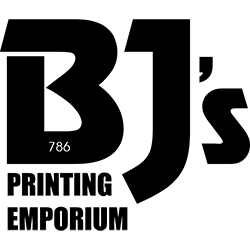
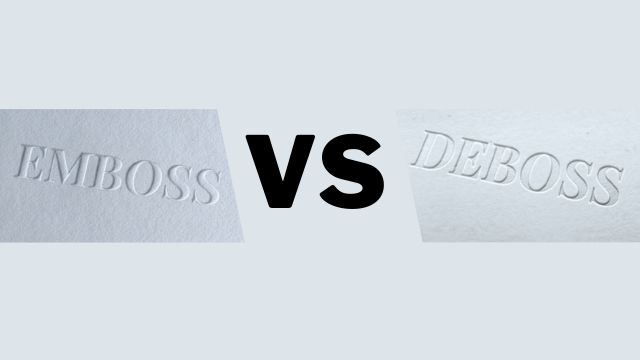
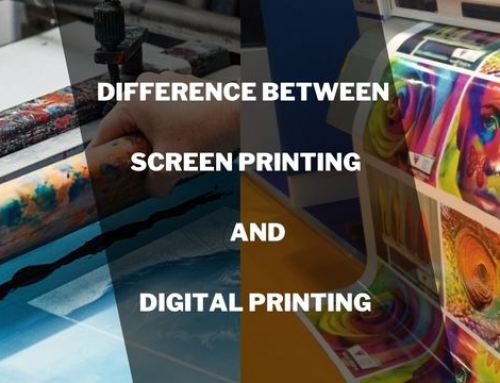
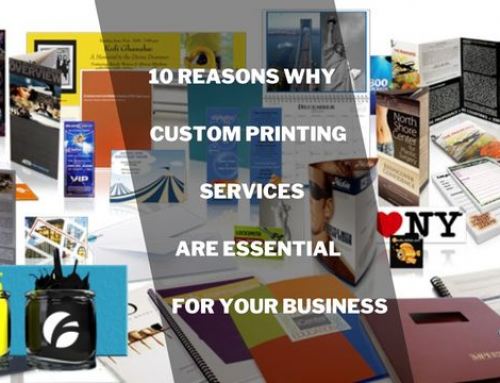
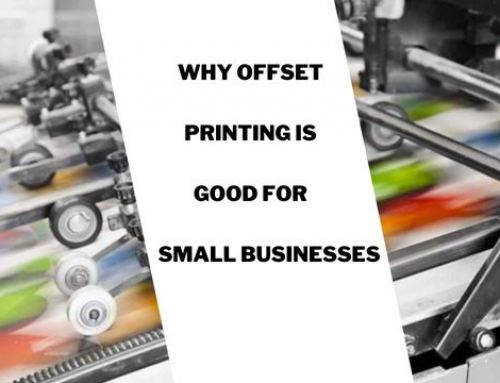


Leave A Comment